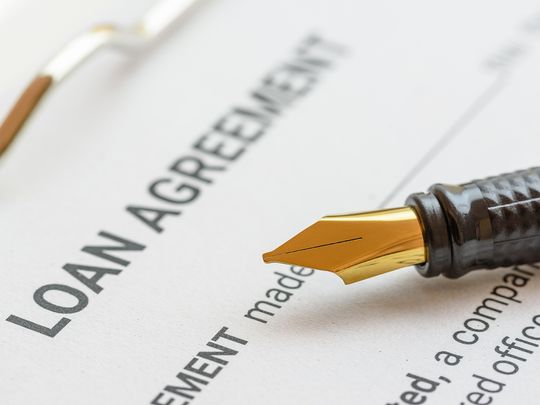
Interest rates dropping like a mic? Loans getting sweeter? Should you jump in or hold out? That's the burning question with rates predicted to fall globally by year-end. Spoiler alert: It's not a simple yes or no!
First, know your loan ninja moves: Fixed rates lock you in at a stable rate, no matter what the market does. Floating rates move with the tide, potentially saving you if they dive, but also risking a jump.
So, is this your golden lending moment? It depends!
Fixed rate fans: If you hate surprises, sticking with a fixed rate might be wise. But if you're confident rates will plummet, waiting could save you big.
Floating rate friends: You thrive on flexibility. If rates drop, you win! But remember, they could also rise, making your monthly payments scarier.
Ready to strategise your loan like a boss? Dive into our guide for the inside scoop on navigating this dynamic borrowing landscape!
For example, say you have a fixed-rate loan with a monthly payment of Dh800. When you first begin paying off your loan, you’ll pay the full Dh800, but Dh750 of it might go toward interest while only Dh50 goes toward the principal. But as the loan payments progress, the balance changes.
At one point, you may pay an equal amount in interest and principal. By the end of your loan’s amortisation schedule, you’ll be paying mostly principal and very little in interest; for example, maybe you pay Dh750 toward the principal and only Dh50 in interest.
What’s the benefit of choosing ‘floating’ rates?
“You are often expected to opt for a floating rate loan when interest rates in general fall over time, as it is widely expected to henceforth, and this will result in the interest rate applicable to your loan falling too, thereby reducing the cost of your loan,” said Mirin Raul, a Dubai-based debt advisor.
“If you are looking for some savings on your interest cost in the near term, floating rate loans are usually set at a marginally lower rate than fixed rate loans thereby giving you some benefit in terms of cost of your loan. But that may not be the case if banks see rates are dropping.”
Also called ‘adjustable rate loans’, these loans are linked to the lender’s benchmark rate, which, in turn, moves in sync with the market interest rate. If there is a change in the benchmark rate, the rate on the loan also changes proportionately. The rate on such loans is reset at specified intervals.
In other words, ‘floating’ interest rates can decrease or increase based on market fluctuations and when a country’s central bank hikes or lowers interest rates. In contrast, as mentioned above, fixed interest rates are locked in on a specified interest rate for a particular period.
So at the end of the ‘fixed’ rate period, the mortgage resets to have a floating interest rate, which changes once a year. So in the third year, if the Eibor rate drops, your loan interest rate for that year drops. Similarly, in the ninth year, if the Eibor rate rises slightly, the interest rate edges up.
The interest paid on your mortgage will continue to fluctuate annually this way, until they pay off the mortgage in full – or refinance it.
What are the risks associated with ‘floating’ rates?
“Although floating interest rates are generally lower compared to the fixed ones, there is always a chance of unexpected rate hikes, which in turn affects the rate at which you borrow. This is a risk you will have to factor in when taking an adjustable rate loan,” said Raul.
“With ‘floating’ rate loans, the unpredictability of interest rate changes also makes budgeting more difficult for the borrower. It also makes it harder for the lender to accurately forecast future cash flows.”
If you realise only after taking the loan that you’d be better off shifting from ‘floating’ to ‘fixed’ interest rates, or vice-versa, bear in mind that when switching, you may be levied a charge. This conversion fee may be up to 2 per cent of the loan amount.
“While a bank assumes that about 55 per cent to 60 per cent of your monthly disposable income is available for repayment of loan, it also takes into account other potential risks like repayment capacity, financial position, credit history, credit score, other financial obligations etc.”
The amount of the loan that you are eligible for also depends on the tenure of the loan and the rate of interest also as these variables determine your monthly outflow which in turn depends on your disposable income.
Why ‘floating’ rates on loans may not always help you
“It is important to know that you can only experience savings if the floating interest rate on a loan remains low for a long time. This is unlikely as interest rates are bound to go up again as a prolonged period of interest rates are not good for any economy,” added Markara.
“Also, even though floating rates on loans are an ideal choice in the current rate environment, it’s not an exact science. As the interest on a floating loan rate changes regularly, the monthly EMIs change as well. This can add a certain level of instability to your monthly financial planning.”
Experts also advise that property owners currently on floating rates should seek out a 1-year fixed-rate refinance option, as they are the ones who have been most impacted by the 11 interest rate hikes put up in the US since March 2022, which was reflected on loans globally as well.
Bottom line?
Choosing between a floating and fixed interest rate is an important decision as it affects your monthly debt installments (EMI).
“When it comes to long-term borrowing, it is best to stay away from a floating rate or any type of loans with variable rates, as it’s hard to accurately predict the direction of rates over the long run,” added Markara. “The most analysts can forecast with certainty is how rates will move now.”
So with long-term loans, by choosing to use a variable rate loan, you are essentially betting that interest rates will be lower in the future. Each year, varying interest rates could bring a new and potentially higher interest rate, possibly increasing the amount of interest you will have to pay.
“When rates are high, as they are today, the odds are good that rates will decrease in the future and not increase, making a floating rate loan a prudent choice. However, lenders are aware of this too, so they tend to offer highly competitive fixed-rate loans as well,” Markara further noted.
Regardless of which type of loan you opt for, it is important to know exactly what your debt will cost you so that you can budget accurately without any surprises.







_resources1_16a4a1613d8_small.jpg)

